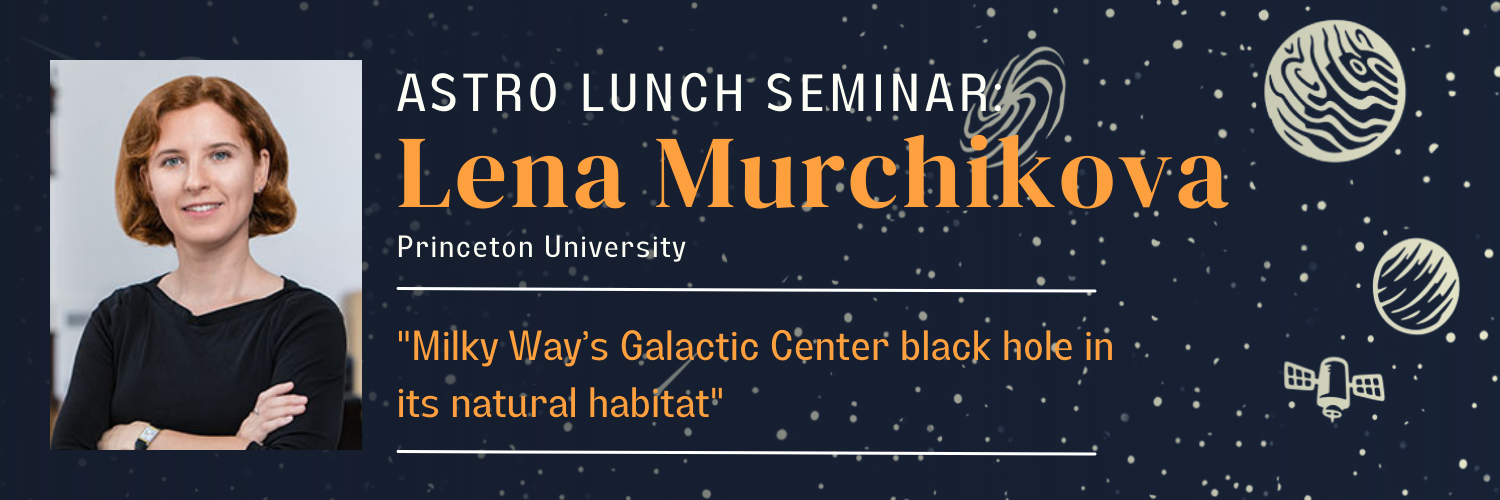Astro Lunch: Lena Murchikova (Princeton)
March 10, 2022 - 12:00pm
Milky Way’s Galactic Center black hole in its natural habitat
The Milky Way’s Galactic Center black hole Sagittarius A* is the closest to us supermassive black hole. It is an ideal candidate to explore near horizon effects, to test alternative theories of gravity, and to learn the mechanics of black hole feeding, accretion, and feedback -- forces shaping galaxies and the Universe as a whole. Despite its proximity, the accretion flow onto it is not well understood. At large scales (10^5 R_sch and beyond), the primary source of information about accretion flow comes from observations of hot X-ray emitting gas. At near horizon scales, the density of the flow is constrained by polarization measurements. At intermediate scales, there are too few model-independent probes to reliably determine physical properties of the gas. In 2019, using ALMA observations I discovered a disk of cool gas at intermediate distances (10^4 R_sch) from the black hole, which provides new clues to the physics of the inner accretion flow of the Sagittarius A*. In this talk, I will review what is known about the structure of the accretion flow around the black hole. I will discuss the properties of the cool disk and what we can learn from it about the structure of the accretion flow. I will show our new realistic simulations of the inner two parsecs of the Galactic Center which, for the first time, captures Sagittarius A*’s multiphase accretion physics.
Location and Address
Hybrid Event.
Wean Hall 7316 (CMU Campus)
Department members, see email for remote access information.
Non-department members, contact paugrad@pitt.edu for access or to be added to the weekly newsletter
